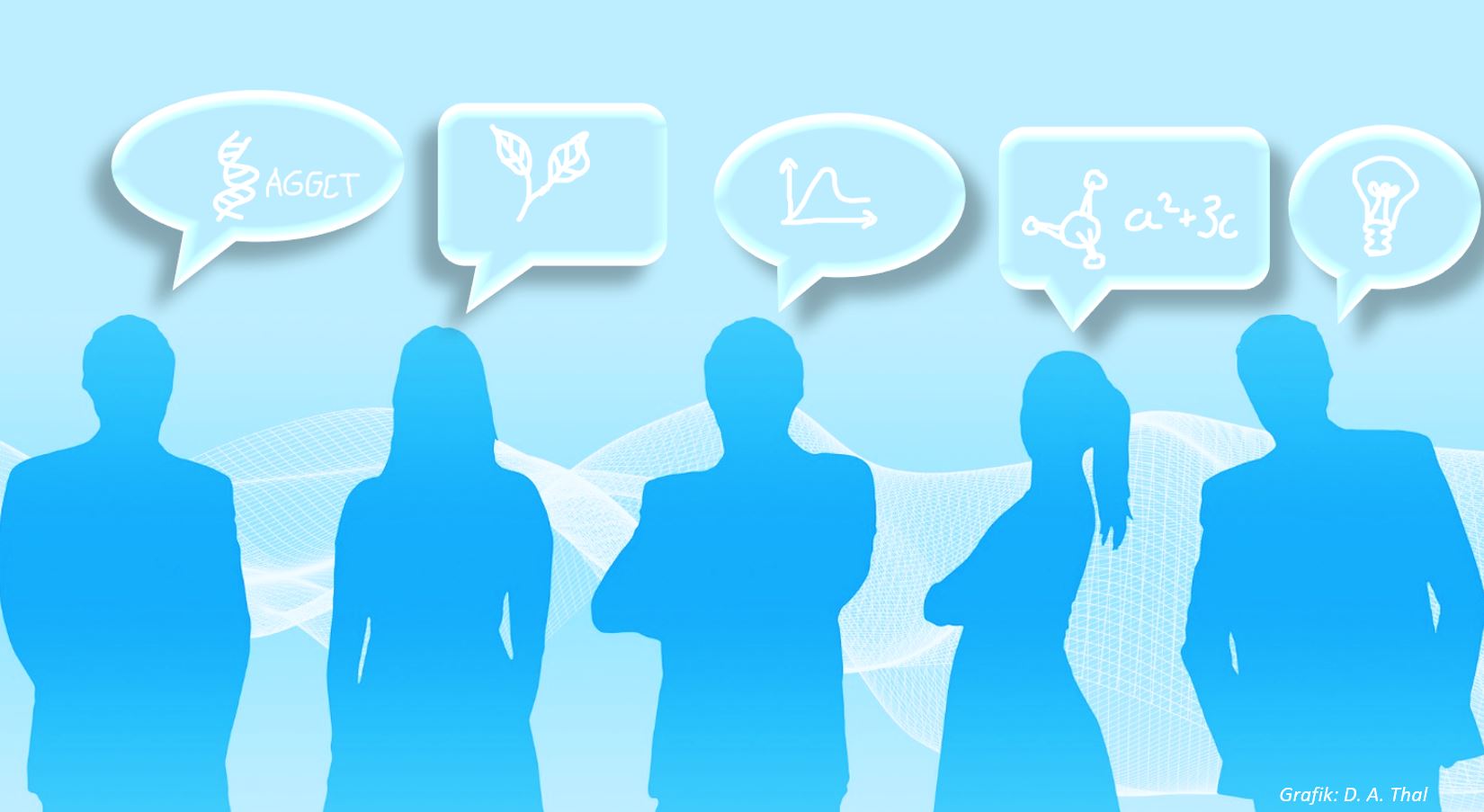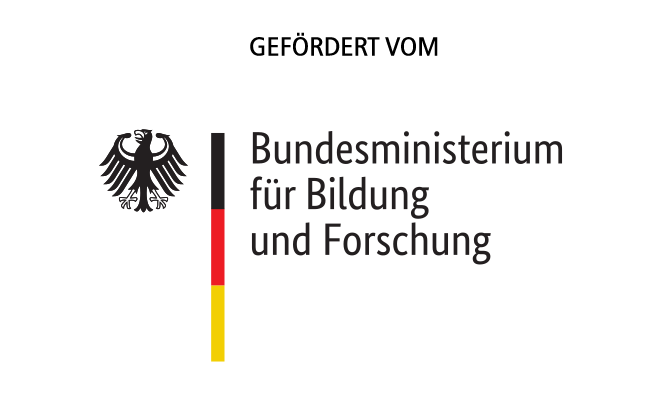Science communication is essential to make knowledge gains useful to society and to enable informed decisions in everyday life but also at the political level. This is particularly evident in a crisis, such as a pandemic. Given the high relevance of the topic, the German Research Platform for Zoonoses invited young scientists to the workshop "Challenges of Science Communication", where they could exchange ideas with three professionals in this field, Kathrin Zinkant (Süddeutsche Zeitung), Elke Reinking (Friederich-Loeffler-Institute) and Prof. Christian Drosten (Charité - Universitätsmedizin Berlin).

Becoming a science communicator requires early training
The coronavirus pandemic has slowed many things down and pushed them into the background - not so science communication. In the pandemic, where many questions remain unanswered, the expertise of scientists is in greater demand than ever before. It has become clear that communicating scientific content and methods is by no means trivial. The workshop "Challenges of Science Communication" was therefore designed to give young scientists the opportunity to deal with this topic early in their careers. The participants in the online workshop were offered three different perspectives: the view of a science journalist, a press office of a research institute and a communicating scientist.
Friend or foe? - science journalism
Ms. Kathrin Zinkant, a biochemist and science journalist at the Süddeutsche Zeitung, pointed out in her contribution that there is no such thing as "the media". The formats and approaches differ greatly in the media landscape. At Süddeutsche Zeitung, the staffing of the knowledge department is still relatively broad, with a 10-person team. However, the status of science journalism has declined noticeably in Germany in recent years, which is now all the more noticeable in the pandemic. The speed of the topics, on the other hand, has increased at a dizzying pace, partly due to social media. This torrent of new content, she said, can also sometimes drive journalism ahead of itself, creating a sense of loss of awareness and control. Ms. Zinkant took pains to explain the pressures that exist in journalism, which are occasionally passed on to scientists in the form of time pressure. She called for more understanding of science journalism and hoped that scientists will have more confidence in this profession in the future. It is understandable that misleading headlines can be counterproductive. But Ms. Zinkant advised the young researchers to put aside their shyness towards the media. Science journalists are not opponents and do not have the goal of showing up researchers. For the future, she called for more interfaces between science journalism and science, such as the Science Media Center (SMC). On the other hand, Ms. Zinkant did not consider Twitter to be a valid source of information. Only the references to scientific studies that can be found there are sometimes helpful in research work, she said. In the end, however, the quality of her work always depends on the sources available to her, and these are, for the most part, communicating scientists. It stands to reason that the quality of the end result, i.e. the media report, is directly dependent on the quality of the source material, i.e. the information from science.
Buffer zone between science and society - the press office
However, the main task of science is still to do research. For this reason, most of the larger research institutions in Germany maintain a press office that supports the researchers in their communication. Insights into the tasks and working methods of a press office were provided by Elke Reinking, biologist and head of the press office at the Friedrich-Loeffler-Institut (FLI). In its role as the Federal Research Institute for Animal Health, she said, communication both externally and internally is an important task of the FLI. For an institute with about 850 employees and various locations, this is no easy task, she said, as the media landscape has also changed in recent years due to social media. Therefore, the FLI runs a Twitter account among its other communication channels since 2019. However, the FLI does not reach the tweet frequency of a Donald Trump, which is due to the fact that the channel is used exclusively for the dissemination of selected, scientific content. In its main activity, the press office at the FLI answers press inquiries from a wide variety of media. In 2020, it already received more than 1,000 of these inquiries. Ms. Reinking is therefore well acquainted with the different forms of journalism mentioned earlier by Ms. Zinkant. On the one hand, this is expressed in different manners, but also in the articles resulting from press releases. A selection of different headlines, which all referred to the same press release of the FLI, illustrated this impressively. Nevertheless, Ms. Reinking draws a positive conclusion for about 95% of the experiences made with the press. Like Ms. Zinkant, she advised young scientists not to be afraid of science communication. Especially since scientists at most institutes have an experienced press office at hand from which they can obtain competent advice and support.
The responsible use of knowledge - the communicating scientist
But why should a scientist communicate? Doesn't he/she actually have "better things to do"? One scientist who can answer this question is Prof. Christian Drosten. The director of the Institute of Virology at Charité - Universitätsmedizin Berlin is a recognized coronavirus expert and has not tired of sharing his knowledge with the public in recent months. On the one hand, he said, he does this because funding from public money also entails a social obligation. On the other hand, he said, it is also the task of an expert to counter false statements time and again and to place abbreviations in the right context. The experiences he has had as a communicating researcher vary greatly. Especially with regard to the reactions of the public - everything from "bomb threats to Sachertorten" was involved. However, particularly strong reactions were usually not related to scientific statements, but rather to the politicization of these. Over time, he has been able to learn a lot. For example, the way journalism uses citations is very different from the way common in research. While science always tries to cite the primary source for a statement, many media only refer to secondary sources without doing their own source research. The effect this can have is something many experienced in their childhood playing the game "Silent Post." Time has also made him more cautious, said Prof. Drosten. This is mainly due to the role of authority that is attributed to people in the media. As a communicating scientist, you should always be aware that you are responsible for every statement you make in public. As a communicator, this also means consciously avoiding misunderstandings or clearing them up at an early stage and making the limits of one's own knowledge very clear.
Like Ms. Zinkant, Prof. Drosten also observes an acceleration due to digital media. He attributed the loss of control experienced by journalism to a loss of self-reflection, for which there is often no time due to the high speed. On the other hand, digital media also offer new possibilities, such as the podcast format, in which complex contexts can be explained with sufficient time.
Finally, Prof. Drosten listed a few criteria that, in his view, make up "good" science communication. These include, first and foremost, only taking the step into the public eye if you have sufficient expertise and actually have something new to say about your own area of expertise or your "field of expertise". Secondly, the focus must always be on professional content, not on one's own person. This also includes not acting in a populist or popular manner. That is one reason why he prefers a podcast format to a television appearance. Like the previous speakers, Prof. Drosten recommended that young scientists should not shy away from taking the step into the public eye, while observing the above-mentioned criteria. In his opinion, channels such as Twitter are particularly suitable for this purpose, where one can provide insights into everyday laboratory life with pictures. Especially at the beginning of such activities, it makes sense to coordinate one's own communication activities with the respective work group leaders.
Science journalist Kathrin Zinkant (bottom left), FLI press office manager Elke Reinking (bottom right) and virologist Christian Drosten (top right) shared their experiences online with the young scientists at the workshop. Moderator Dana Thal (German Research Platform for Zoonoses, top left) directed questions from the audience to the speakers.
Opening the stage for scientific findings
The workshop impressively showed how the individual actors in science communication - journalism, press office, science - may differ in their perspectives and working methods, but in the end they all depend on each other and can pursue common motives. Good science journalism depends on communicating scientists. The press office can play a bridging role here. For young scientists, it is important to get to know the individual actors in science communication at an early stage and not to be unnecessarily shy about this topic. However, it should be clear that this is not a good way to present oneself, because the focus should always be on research and not on the researcher.
Text: Dr. Dana Thal, German Research Platform for Zoonoses
Further Links:



